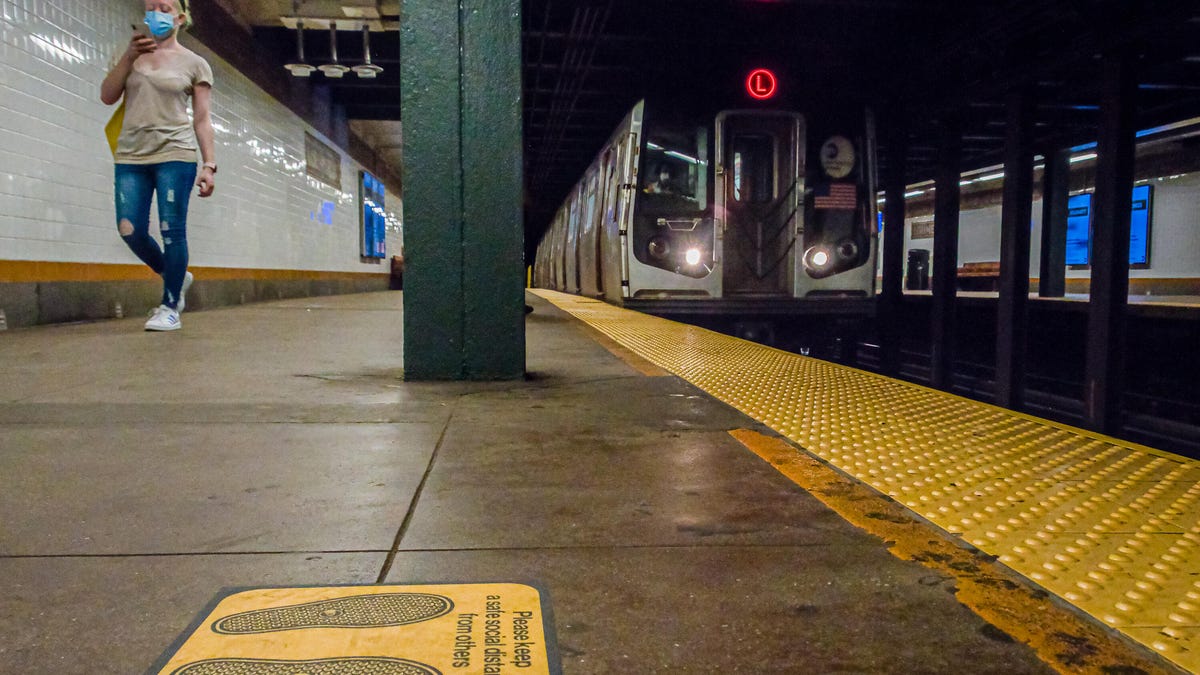Apparently, subway riders should've been wearing masks all along
Air pollution inside some of the US' busiest subway stations is really bad. Like, terrible, according to new research.

Mask up, NYC MTA riders.
I don't think anyone considered subway stations and the platforms near the tracks clean, healthy areas to be around for a long period of time, but science and research confirms it. The air pollution in subway stations is terrible, according to a new study from New York University's Grossman School of Medicine published last Wednesday.
The study took researchers to 71 subway stations across the US where they measured particulate matter trends during morning and evening rush hours. Note, the US EPA defines PM2.5 (the measurement variable used) as super-small particles that measure around 2.5 micrometers. We inhale them all the time, and 35 micrograms per cubic meter is considered a safe daily exposure level. While no stations were great places to breathe air for long periods of time, the New York City Metropolitan Transit Authority and New Jersey's PATH systems were the biggest offenders.
These stations showed mean PM2.5 measurements of 1,070 micrograms per cubic meter. Remember, 35 micrograms per cubic meter is generally considered safe. At one MTA/PATH station, researchers even registered a value as high as 1,700 micrograms per cubic meter. So, yeah, air pollution is pretty bad down there. The study added additional research is "urgently needed" to understand where exactly the pollution comes from. But, researchers noted the specific particles in the air were composed of iron and organic carbon. According to the researchers, these typically come from fossil fuels and general decay of plants and animals.
At any rate, wearing a mask while waiting for the subway should be even more appealing beyond the safety they provide from the coronavirus.

